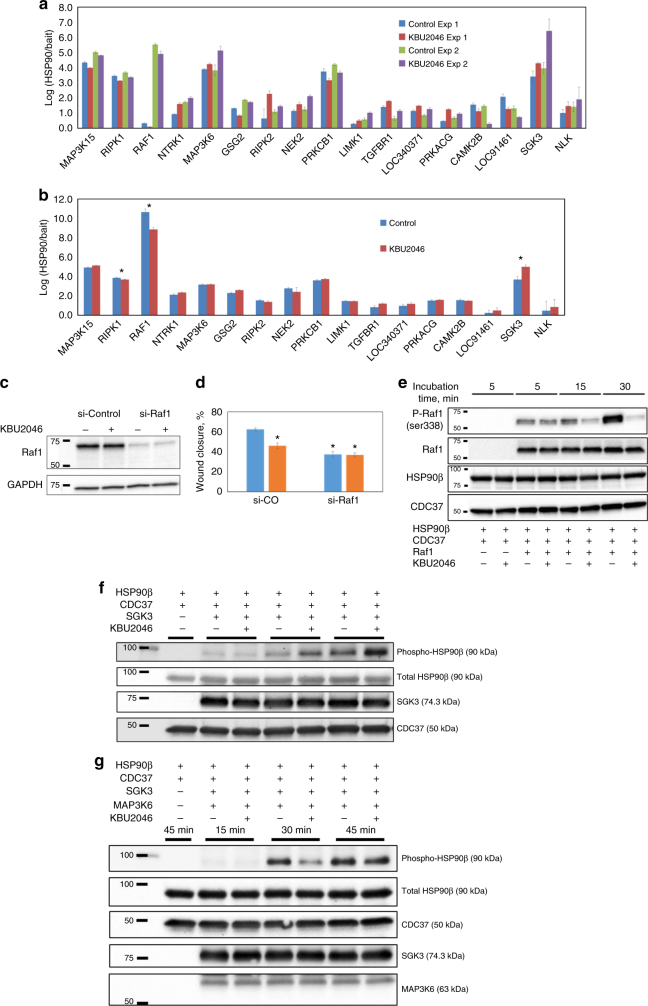Fig. 6.
KBU2046-mediated changes in the signature of client proteins bound to the HSP90β/CDC37 heterocomplex mediate effects upon cell motility. a LUMIER assay. HEK293T cells were transfected with 1 of 420 different protein kinases, treated with 10 µM KBU2046 (N = 5 replicates) or vehicle control (N = 5) for 3 days, and LUMIER assays performed. The N = 17 kinases that gave significant findings (Student’s t-test <0.05) in the same direction in each of two separate experiments are depicted. Each separate treatment and kinase condition in each of two separate experiments was conducted in replicates of N = 5. b The experiment was then repeated for these 17 kinases in the presence of TGFβ treatment, and those demonstrating significant differences (t-test <0.05) in the same direction as in a are denoted by *. c, d Wound healing assay. PC3 cells were transfected with siRNA targeting RAF1 (si-Raf1) or non-targeting siRNA (si-control), treated with KBU2046 or vehicle as above, and RAF1 protein measured by western blot (c) and effects upon wound healing measured (d). e Inhibition of RAF1. Purified recombinant HSP90β, CDC37, and RAF1 were combined with KBU2046, as indicated, incubated in an in vitro kinase assay for the indicated times, and western blot for RAF1-Ser338 phosphorylation performed. f, g Effect on HSP90β/CDC37 heterocomplex formation and function in vitro. Purified recombinant HSP90β, CDC37, RAF1, SGK3, or MAP3K6 were combined and treated with KBU2046 or vehicle control, as indicated, incubated in an in vitro kinase assay for the indicated times, and western blot performed, as denoted. All experiments were repeated at separate times at least once, with similar results

